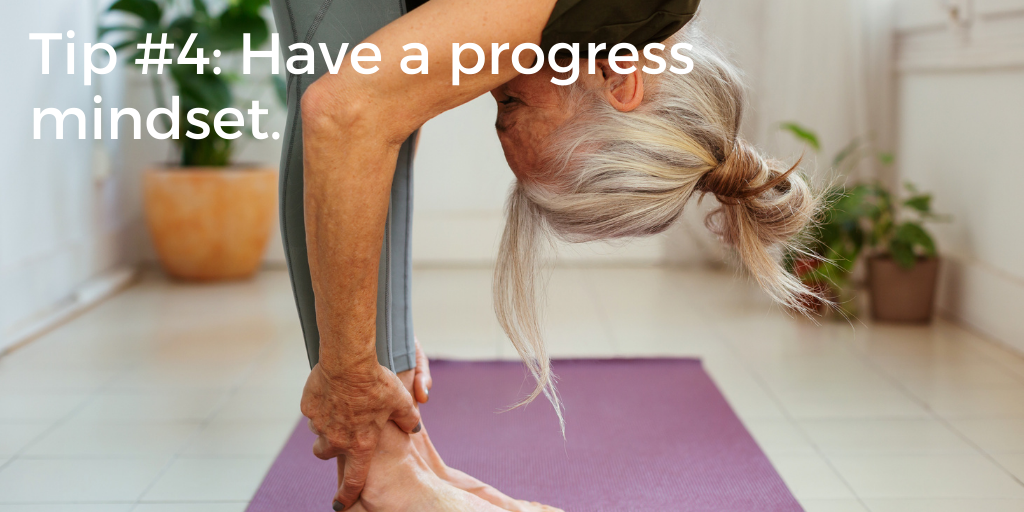Get fit for life tip #4: Have a progress mindset.
Slow and steady won’t win the race, but it will help you cross the finish line!
Building slowly to your fitness goals will make your routine sustainable over the long term.
Stanford psychologist Carol Dweck developed the concept of “fixed” vs. “growth” mindset. People with a “fixed mindset” attribute success to innate qualities – being skilled at ball sports, for instance. As a result, they they equate failure with a lack of ability and see no reason to try again.
People with a “growth mindset” believe that that qualities can be cultivated with effort and regular practice – like a muscle that grows stronger with use. They focus on improvement and thrive on overcoming challenges.
If you’re getting back into exercise, the temptation is to do too much, too fast. Body and mind both lose out in this equation. The key is to set ambitious goals, but approach them realistically, step by step.
There are many fitness trackers and applications that will help you find a manageable pace, slowly build up and track your progress. Several recent studies have suggested that by offering virtual badges, challenges and “likes”, gamification increases users’ enjoyment and motivation to exercise.
Monitoring yourself enables you to recognize progress, while also adapting your workout to your changing needs. Notice how factors such as sleep, stress or diet influence how you feel. Try different configurations to see what your body responds to – shorter more frequent workouts, for example, or a mix of activities.
Whatever gains you accumulate, however small they may seem, are an important part of the process and serve to positively reinforce your mindset.
Read about Dr Dweck's research.
Is gamification effective in motivating exercise? Goh & Razikin, Human Computer Interaction, 2015

